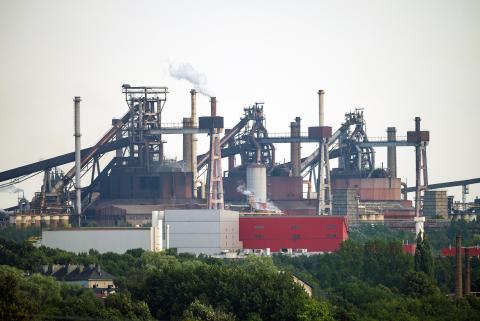N.M. taxpayers at Risk in Peabody-Bowie Coal Deal
What are your chances of getting a loan on your house if you already have a $1 million mortgage and the property is worth only $100,000?
Slim to none, of course.
Yet Bowie Resources, a Utah-based coal company, is asking Colorado and New Mexico for just such an arrangement. Colorado officials are right to be raising questions about the deal Bowie is pushing. Regulators in New Mexico should be doing the same.
The outdated coal-industry tactic Bowie hopes to take advantage of in New Mexico is called self-bonding, which would let it proceed with coal-mining operations while promising, on paper, to clean up its mess when it goes. It costs many millions of dollars to reclaim a site once a mine closes. Under self-bonding, companies pledge existing mines as collateral for cleanup costs. It’s called “self” bonding because it lets miners avoid paying real cash to states or insurance companies to assure these cleanup costs will be paid.
The risk facing New Mexico is that Bowie’s assets aren’t worth much.
Self-bonding made sense when the coal industry was healthy — back when coal assets were worth a lot more money. But the industry today is in deep financial trouble, and coal mines now are seldom good cleanup collateral because they don’t have much value. Dozens of coal companies have gone bankrupt of late because their debt so vastly exceeds the value of their assets.
This condition is likely to persist, and Colorado officials seem to be well aware of what’s happening and of the public risk it creates. New Mexico officials don’t appear to have quite caught on.
Bowie’s recent purchase from Peabody Energy of Twentymile mine in Colorado and the Lee Ranch and El Segundo mines in northwest New Mexico assume that operations at these mines will continue under the self-bonding deal Peabody had. The understanding Peabody had with regulators was that its self-bonding was good for $360 million in mine cleanup liabilities. Bowie is seeking to continue that arrangement, and has applied for self-bonding in both Colorado and New Mexico.
Colorado officials say taxpayers would be better protected if Bowie were to post surety bonds or cash. New Mexico officials have not shown the same wariness.
The question before New Mexican taxpayers now is whether Bowie Resources is a good bet for self-bonding. Here’s some detail that suggests it isn’t:
- Bowie still carries $359 million in long-term debt and $7.2 million in insurance premium obligations on a collection of Utah mines it bought three years ago from now-bankrupt Arch Coal for $435 million. Those assets are valued today at $344 million. Liabilities exceed assets on these core holdings, in other words.
- Coal analysts see in Utah — which is where most of Bowie’s holdings are — the same profound decline that is occurring everywhere in the coal industry, a trend that doesn’t bode well for Bowie.
- In its announcement last year that it would buy those Colorado and New Mexico mines from Peabody, what Bowie was really talking about was refinancing its debt. Trafigura, a large international trading outfit worth about $120 billion, and its private equity arm, Galena Asset Management, financed the deal and as a key piece of it appear to be lending Bowie $359 million, but for only 30 months.
New Mexico simply cannot expect Bowie to make good on any mine-cleanup promises it makes. Taxpayers are at risk on the company’s self-bonding scheme, and regulators should not let it proceed.
Tom Sanzillo IEEFA’s director of finance. This commentary first appeared in today’s Santa Fe New Mexican.
More here (“Bowie Resource Partners Seeks Taxpayer Guarantee on Cleanup Costs”), here (“In Questionable Coal-Expansion Strategy, One Company Appears Especially Out of Sync”), and here (“Oakland’s Proposed Coal-Export Expansion Is Fraught With Risk”).











